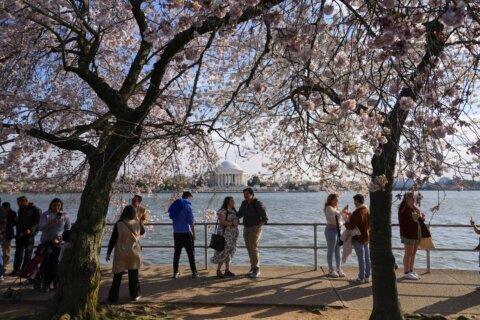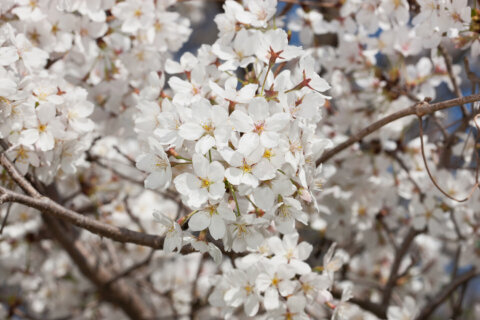WASHINGTON — The cherry blossoms have graced the nation’s capital for more than 100 years. But it’s a tradition that came close to never happening, author Dan Stone says.
Some of the first cherry trees in the United States were not even planted around the Tidal Basin, but around a guy’s home in Chevy Chase, Maryland.
His name was David Fairchild, and he worked for the U.S. Department of Agriculture. His job was to go around the world searching for exotic plants and crops.
“The fact is that these trees would not have happened if it were not for this one man who said, ‘OK; I’ll import them to my own property,”’ says Stone.
Stone is writing a book on Fairchild — “Suitcase Full of Lemons: The Life and Adventures of David Fairchild” — that is expected to publish in 2017.
He describes Fairchild as the first foodie and the first food explorer. Stone says that Fairchild traveled in a way reminiscent of Indiana Jones in search of plants. And those travels brought to America plants such as avocados, nectarines, cherries, dates, Egyptian cotton, pistachios and the cherry trees.
Fairchild fell in love with the trees while in Japan in 1902, but Stone says no one was interested in cherry trees that didn’t bear any fruit.
Nonetheless, Fairchild imported more than 100 trees for his own property in Chevy Chase. That’s when people in the U.S. started to see for themselves how beautiful they can be.
In 1909, first lady Helen Taft visited Fairchild’s home in Chevy Chase and said the trees could be used to help beautify the capital, which at the time was not much to look at.
So Mrs. Taft, David Fairchild and Eliza Scidmore, a D.C. resident who had also fallen in love with the trees while abroad, brokered an agreement with the Japanese to get 2,000 trees sent across the Pacific to a port in Seattle and onto a train to D.C.
When trees arrived and the crates were opened, they found that the trees were diseased and full of bugs. Stone says at this point in American history there were no quarantine laws, and so there was really no way to keep out invasive species which could end up decimating American crops.
The trees had to be destroyed. Stone says they were propped up like tepees on the National Mall and set afire. Even the media was invited to witness the burning and that a picture of it ended up on the front page of The New York Times.
“We insulted the Japanese with their gift by burning them very publicly on the National Mall,” Stone says. “Everyone thought that was unfortunate.”
But it turns out that the Japanese were embarrassed over the trees. A second shipment was sent out in 1912, of more than 3,000 pristine trees. “One way to ensure they weren’t diseased was to ensure that they were older trees.” Stone says. “So, slightly more mature, [and] they would blossom even sooner.”
Today, only two of these original trees remain. “If you look around the Washington Monument, they are the ones that look really old and scraggly,” Stone says. There is a plaque near the trees with the date they were planted: March 27, 1912.
Stone says the trees generally only last 30 to 40 years, so many of the trees around the Tidal Basin are descendants from those original trees.
“The way that these gardeners keep the trees going is grafting and cutting and pruning,” Stone says. Trees around the Tidal Basin are replaced every few decades.






